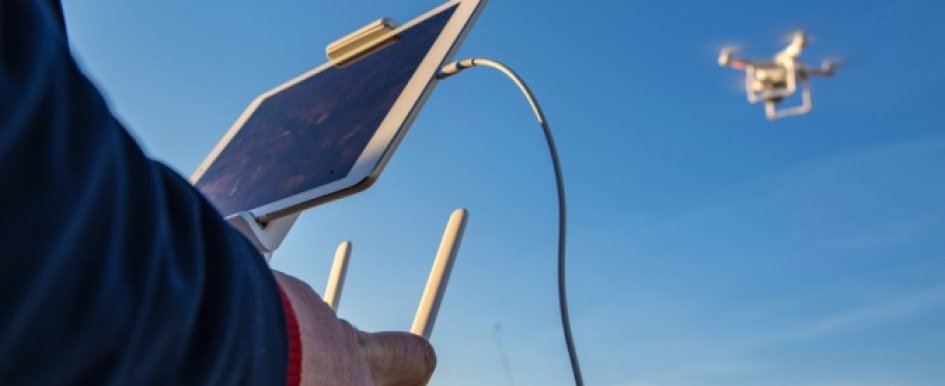
Drones have been a hot topic in the industry for a while now. However, you may still be wondering how you can implement them in your business to further benefit your bottom line. With the recently released FAA regulations, construction business owners now have a set of detailed guidelines to follow for proper drone use. To fully understand the implications of these new regulations, CBO caught up with Tristan Randall, strategic projects executive, business development at Autodesk, and Dan McKinnon, director of product at 3DR, to talk all things regulations and drones.
“It’s worth mentioning that, in general, drone technology represents a unique shift for construction,” said Randall. “It’s an indication of a much broader trend around the use of robotics on jobsites. Right now, drones are passive, but we see them becoming more active, just like the general trend in robotics.”
Read Randall and McKinnon’s insight into the new regulations and jobsite drone use below.
CBO: What changes to drone regulations will have the most profound effect on the construction industry?
TR: The biggest difference for construction companies is the removal of the organizational burden. In the past, the Section 333 exemption process limited how companies could use drones, and it was an added burden for SMBs that don’t necessarily have the time to put the application together. Now, it’s much easier for them to take advantage of drone use. With the new regulations, businesses are basically just certifying operators as individuals, without all of the processes related to the organization. In addition, Operators no longer have to have a pilot’s license, but simply must demonstrate the specific aeronautical knowledge related to drones, which also makes it less burdensome for businesses to get into UAV use.
DM: The operators using drones in construction currently were generally already pilots. That limited what companies could do. Now, it makes more financial sense for a construction company to get into drone use.
CBO: Will that increase related safety issues?
DM: Previously, because you had to have a pilot’s license, it became just another process to get through. There wasn’t any particular emphasis on UAV safety. We know that people who fly aircrafts have a good understanding of the airspace. Now, with this exam, there is a lot of information you have to know about UAV-specific safety. About 200 pages of UAV safety material are now available.
TR: The certification process is very important to commercial drone operation now, meaning it’s on the operator to conduct drone use safely. There is an obligation and responsibility associated with drone use that wasn’t present before now. It’s going to incentivize people to operate safely. Because of the fact that you can actually be compensated for responsible drone use, by and large, we are going to see a community that is built of experienced, safe pilots.
CBO: How will changes to the regulations affect manufacturers?
DM: As a manufacturer, we were begging the FAA for regulations for over a year. We had documentation and operating manuals, but we needed official regulations. Now, it’s spelled out. We can write exactly what the pilot should do during inspections, based on regulations. I’m sure, as the process matures and the industry itself matures, we will get more guidelines, too.
TR: It’s also going to spawn hundreds of new drone companies that will be primarily service providers. Construction companies will have a lot of new options to choose from for drone use, besides just using drones in house. For example, they could hire consultants that are specific to construction photography. On-demand services will become available. It’s going to become a highly competitive environment, but what companies will be able to achieve with that environment will increase, too.
CBO: What kinds of processes or systems should business owners put in place for drone operation?
DM: What’s great about the new regulations is that they truly spell out what business owners should be doing to put a system in place. From our perspective, we are making sure that owners get the right data out of the drones. For drone usage, though, business owners should put together a standard operating procedure that falls under FAA guidelines. Have an organizational checklist and have the same user every single day. We are planning on publishing suggested, standard guides soon.
TR: I think Dan is right on point in saying that this is something that can be standardized and will need to be standardized. It will be a very short period of time before this becomes something routine. The nature of drone operation in construction—that will be figured out and organized very quickly, but what will take some time is figuring out how to manage the data that comes from drone usage. Through 3DR and Autodesk’s partnership, we are looking at how to improve that process.
CBO: Who should be heading this up within a construction company?
DM: Currently, we are seeing the people involved in virtual design—it’s the technologist.
TR: Technology starts out in an innovation group, traditionally. This phase is going to be pretty common in larger construction companies. One of the things that has kind of been a barrier previously to getting into drone usage was that you kind of had to have a “drone guy” to consider implementation within the company. There hasn’t been a truly feasible way to deploy technology on projects for SMBs. We are essentially trying to enable anyone on a site to operate these drones by building safety into the technology. We think there will be a shift from drone specialists to a project engineer within the company heading up this kind of implementation. Some firms will surely lean on outsourcing this work, but we will see regular construction staff adding this on to their responsibilities as well.
To view the new regulations, visit the FAA website. For more information on Autodesk and 3DR, visit autodesk.com or 3dr.com.
